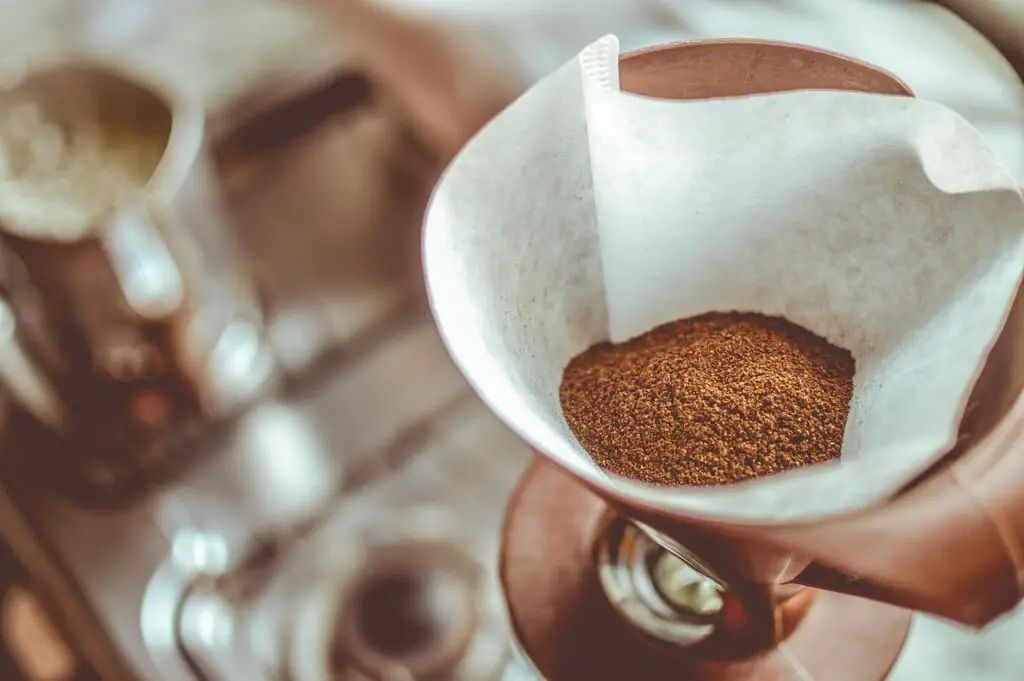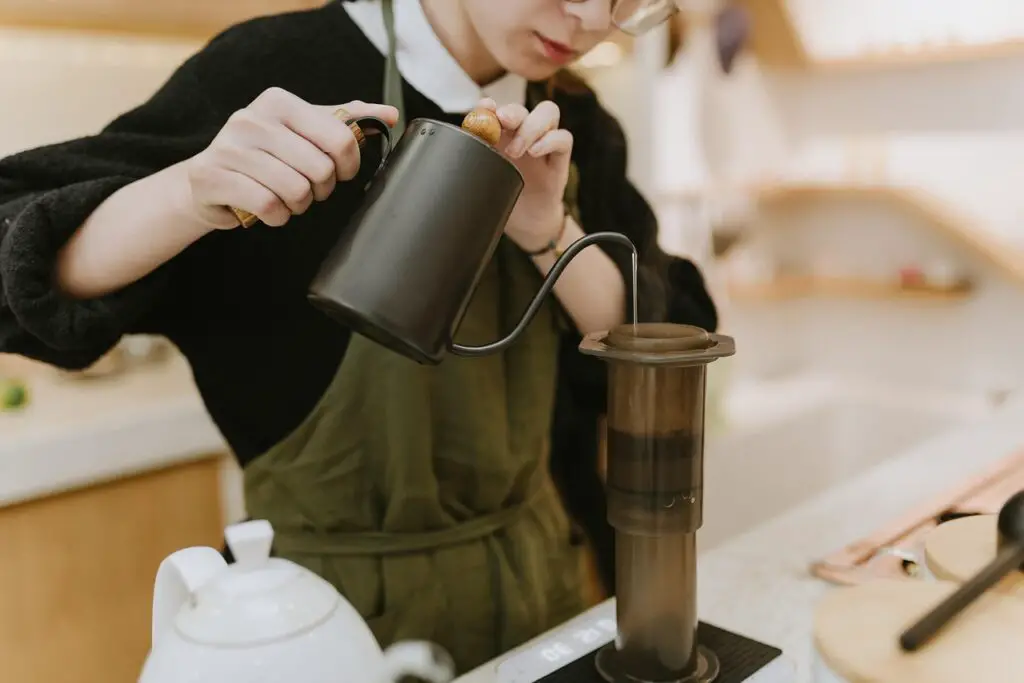
Coffee brewing is both an art and a science, where precision meets personal preference to create a beverage that’s enjoyed by millions worldwide every day. At the heart of this process lies the concept of the golden ratio, a term that evokes images of mathematical perfection but in the world of coffee refers to the ideal balance between coffee grounds and water.
This ratio is the foundation for achieving a full-flavored, balanced cup that highlights the nuanced profiles of the beans without veering into under-extraction (which can make coffee taste sour and acidic) or over-extraction (leading to bitterness and astringency). Whether you’re a casual home brewer or an aspiring barista, understanding and applying the golden ratio can elevate your daily ritual from mediocre to magnificent.
The Golden Ratio

The golden ratio in coffee isn’t a rigid rule but a guideline promoted by organizations like the Specialty Coffee Association (SCA), which sets standards for excellence in the industry. According to these guidelines, the ideal ratio falls between 15:1 and 20:1, meaning 15 to 20 parts water to 1 part coffee grounds by weight.
This range allows for flexibility depending on the brewing method, bean type, and individual taste. For instance, a 15:1 ratio produces a stronger brew, ideal for those who enjoy bold flavors or add milk and sugar, while a 20:1 ratio yields a milder cup, perfect for sipping black.
The key is that this starting proportion ensures optimal extraction, where the water pulls out the desirable soluble compounds from the grounds—such as sugars, acids, and oils—without overwhelming the palate.
It’s essential to note that the golden ratio is based on weight, not volume. This distinction is crucial because volume measurements can be inconsistent. A tablespoon of finely ground espresso might weigh differently from the same volume of coarsely ground beans for cold brew.
Pre-ground coffee from the store is often calibrated for medium grinds suited to drip machines, but variations in density mean that scoops or cups aren’t reliable for precision. Weighing your ingredients with a kitchen scale removes the guesswork, ensuring consistency from one brew to the next. This weight-based approach aligns with professional practices in coffee shops, where every gram is measured to maintain quality.
The goal of adhering to this ratio is straightforward: flavor optimization. A well-balanced brew allows the inherent characteristics of the coffee to shine through. If the ratio is too water-heavy (say, beyond 20:1), the result is weak and underwhelming, lacking body and depth.
Conversely, a ratio that’s too concentrated (below 15:1) can lead to an overpowering bitterness. The sweet spot in the 15:1 to 20:1 range supports additions like milk, cream, or sweeteners without diluting the coffee’s essence. For example, if you prefer your coffee with a splash of milk, a 15:1 ratio provides enough strength to stand up to the dairy, preserving the brew’s integrity.
Many experts favor a 16:1 ratio as a versatile starting point within this range. This proportion is often described as ideal because it’s strong enough to deliver robust flavor but not so intense that it becomes harsh. It’s a good baseline for experimentation, allowing brewers to adjust based on feedback from their taste buds.
If you drink your coffee black, you might lean toward 17:1 or 18:1 for a gentler profile that emphasizes subtlety. On the other hand, for a bolder cup that’s meant to be lightened with cream and sugar, 15:1 could be more appropriate. The beauty of the golden ratio is its adaptability—it’s not about perfection in a mathematical sense but about harmony in the cup.
Beyond the Ratio: Key Factors Influencing Your Brew

While the golden ratio provides a solid foundation, it’s far from the only element that determines the quality of your coffee. Brewing is a multifaceted process, and several other variables must be considered to achieve the best results. These factors interact with the ratio, amplifying or diminishing its effects, and understanding them can help you troubleshoot and refine your technique.
Grind Size
One of the most critical aspects is grind size. The coarseness or fineness of the grounds directly affects extraction speed and efficiency. A finer grind exposes more surface area to the water, leading to quicker extraction and potentially stronger flavors, but it risks over-extraction if not managed properly.
Conversely, a coarser grind slows down the process, which can result in under-extraction if the brew time isn’t adjusted. For drip coffee machines, a medium grind—similar to table salt—is standard, as it’s optimized for the typical flow rate. French press brewing, however, calls for a coarser grind, akin to sea salt, to prevent grounds from passing through the mesh plunger and creating a gritty texture.
Pour-over methods often benefit from a medium-fine grind, which allows for controlled extraction during the pouring process. Mismatching grind size to your method can throw off even the most precise golden ratio, so investing time in finding the right consistency is worthwhile.
Temperature
Temperature is another pivotal factor. Water that’s too hot can scald the grounds, extracting undesirable bitter compounds, while water that’s too cool fails to pull out enough flavors, resulting in a flat brew. The recommended range is 195 to 205 degrees Fahrenheit, which strikes a balance for hot brewing methods.
At this temperature, the water efficiently dissolves the soluble elements in the coffee without degrading them. This isn’t boiling water—boiling point is 212 degrees Fahrenheit at sea level, which is too aggressive for most beans.
For cold brew, the process is different; room-temperature or cold water extracts flavors slowly over hours, producing a smoother, less acidic concentrate. Regardless of the method, temperature influences how the golden ratio performs, as it dictates the rate at which flavors are released.
Agitation
Agitation, or the movement of the grounds during brewing, also plays a significant role. In immersion methods like French press, gentle stirring increases contact between water and grounds, enhancing extraction and concentration.
Pour-over techniques involve manual pouring in stages, which naturally agitates the brew bed. In contrast, automatic drip machines offer minimal agitation, relying on gravity and the machine’s design. More agitation can lead to a fuller-bodied cup, but too much might cause over-extraction. If your brews consistently fall short, experimenting with agitation—such as blooming the grounds with a small amount of water first to release gases—can complement the golden ratio effectively.
The choice of filter is often overlooked but has a profound impact on the final product. Filters act as gatekeepers, determining what passes into your cup. Paper filters, common in drip and pour-over setups, trap most insoluble particles like fine grounds and oils, resulting in a clean, bright brew.
Metal filters, used in some French presses or reusable cones, allow more oils and sediments through, adding body and a richer mouthfeel. Neither is superior; it depends on your preference. If you enjoy a silky texture with visible oils, metal might suit you, but for a crisp, sediment-free cup, paper is ideal. The filter’s pore size interacts with your grind and ratio, so testing different types can refine your results.
Best Practices for Mastering the Golden Ratio

To truly harness the power of the golden ratio, incorporate best practices that emphasize precision, quality, and consistency. These habits, drawn from expert insights, can transform your brewing routine.
Start with accurate measurement. Since the ratio is weight-based, a digital kitchen scale is invaluable. Weigh your grounds and water to ensure the 16:1 (or your chosen) proportion is spot-on. In professional settings, everything is weighed for consistency, from grounds to the final yield.
If a scale isn’t feasible, use a consistent volume tool like a dedicated coffee scoop, but calibrate it by weighing a few times to understand its gram equivalent. Experimentation is key—brew a few batches, taste, and adjust incrementally.
Coffee quality is non-negotiable. Freshly roasted beans from a local roaster outperform pre-ground supermarket options every time. Look for beans with detailed tasting notes: light roasts often feature bright acidity and fruity notes, while darker roasts bring chocolatey or nutty undertones.
Freshness matters because coffee begins to lose flavor shortly after roasting due to oxidation. Grinding your own beans just before brewing preserves volatile compounds, leading to a more aromatic and flavorful cup.
Speaking of grinding, a burr grinder is a game-changer. Unlike blade grinders, which produce uneven particles, burr grinders crush beans consistently between two surfaces, allowing for precise control over size. This uniformity ensures even extraction, making your golden ratio more effective.
Entry-level burr grinders are affordable and offer settings for different methods, from espresso-fine to French press-coarse. If you’ve been using pre-ground coffee, switching to fresh grinding will reveal layers of flavor you didn’t know were missing.
Finally, consistency ties everything together. Choose a brewing method and routine you can stick with daily—whether it’s a simple drip machine or a meticulous pour-over. Complicated setups might yield amazing results occasionally, but if they’re unsustainable, you’ll revert to shortcuts. Once established, play around: tweak the ratio slightly, try new beans, or adjust temperature. Keep a journal of your experiments to track what works. Over time, this iterative approach will dial in your perfect brew.
Expanding Your Coffee Horizons

Delving deeper, let’s see how the golden ratio applies across popular brewing methods, building on the foundational principles.
For drip coffee makers, the golden ratio shines in its simplicity. Aim for about 60 grams of coffee per liter of water (roughly 17:1). Pre-wet the filter to remove any papery taste, add your weighed grounds, and let the machine do the work. This method is forgiving, but pairing it with fresh grounds and the right temperature elevates it.
Pour-over demands more involvement but rewards with clarity and control. Using a 16:1 ratio—say, 20 grams of coffee to 320 grams of water—start with a bloom: pour a small amount of hot water to degas the grounds, then continue in circular pours. This technique maximizes agitation and extraction, highlighting single-origin beans’ nuances.
French press, an immersion method, benefits from a 15:1 ratio for intensity. Coarse grounds (30 grams to 450 grams water) steep for four minutes with occasional stirring. Press slowly to avoid disturbing sediments. The result is full-bodied, ideal for robust blends.
Even espresso, though pressure-based, echoes the ratio concept with a 1:2 input-to-yield, but the principles of weight and extraction apply.
| Method | Starting Ratio | Example Dose | Notes |
|---|---|---|---|
| Drip Machine | 17:1 | 60 g/L | Pre-rinse paper filter |
| Pour-Over | 16:1 | 20 g : 320 g | Bloom 30–45 s, staged pours |
| French Press | 15:1 | 30 g : 450 g | 4 min steep, gentle stir, slow press |
| AeroPress | 12–15:1 | Varies | Short contact time; consider bypass |
| Moka Pot | ~7:1 | Varies | Fine grind, watch for channeling |
| Cold Brew | 5–8:1 (concentrate) | 200 g : 1–1.6 L | Dilute to taste after steep |
| Espresso | Input:Output ≈ 1:2 | 18 g → 36 g | Pressure-based, separate dial-in |
Your Journey to Coffee Excellence
The golden ratio is more than a number; it’s a gateway to better coffee. By starting with 15:1 to 20:1 by weight and incorporating grind, temperature, agitation, and filters, you’ll craft brews tailored to your taste. Invest in tools like scales and burr grinders, prioritize fresh beans, and commit to consistency.
With practice, each cup becomes a testament to your growing expertise. Whether black or customized, the perfect brew is within reach—experiment, enjoy, and savor the results.

